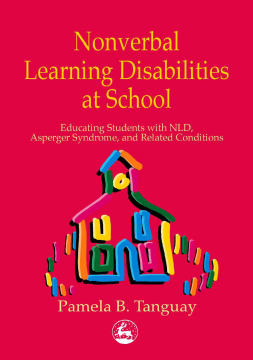
Additional Information
Book Details
Abstract
Most teachers will at some point come across a child with nonverbal learning disabilities, and this practical and informative book will be invaluable in helping them to help such children to achieve their full potential in the classroom.
Topics such as finding the right school, curriculum modifications, and social and emotional issues experienced by children with NLD are covered. However, the bulk of the book outlines specific teaching strategies, from how to deal with essay questions, to tips on helping the student master long division and ideas for improving reading comprehension. The author defines and discusses concepts such as frontloading and a cooperative learning environment, and discusses how they benefit the student with NLD.
Pamela B. Tanguay is the mother of a teenage daughter who was diagnosed with NLD at the age of 9. Since that time she has become an active advocate for individuals with NLD and related conditions. She is the owner and co-developer of the widely-acclaimed website NLD on the Web! Pam was a founding board member of ASC-US Inc, which is a national non-profit advocacy organisation supporting those dealing with neurologically-based communication disorders. She currently sits on their advisory board and serves as Senior Editor of their newsletter, The Source. Pam, along with her husband and daughter, makes her home in Tolland, CT, USA.
Pamela Tanquay writes from the heart (she too is a parent of a child with NvLD) though she clearly grasps the subtle, complex and challenging features of NvLD. It describes the most practical of approaches to the debilitating syndrome. This is an excellent companion to her other text: Nonverbal Learning Disabilities at Home: a Parent's guide, with a forword by Byron Rourke FRSC. Both are highly readable, practical texts on NvLD. This book should be on the shelf of every Senco, teacher of specific needs and diagnostician.
Assessment Matters
[this book] will undoubtedly be of interest and of use to parent and teachers of children with NLD and/or other disorders. The content provides an interesting and informative insight into one mother's devoted work on her child's disorder.
British Journal of Educational Psychology
